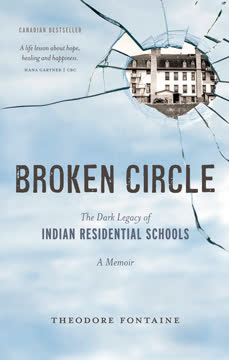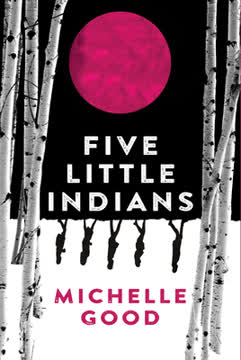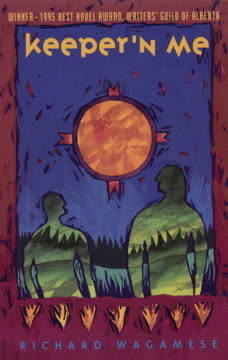Key Takeaways
1. Loss of Innocence: The Traumatic Impact of Residential Schools
From this point on, my life would not be my own.
Early Exposure to Abuse. Theodore Fontaine's memoir vividly portrays the abrupt end to his childhood innocence upon entering the Fort Alexander Indian Residential School. At just seven years old, he was thrust into a world of physical, sexual, and emotional abuse, marking the beginning of a 12-year ordeal that would profoundly shape his life. The loss of security and the introduction to fear and violence are central themes.
Specific examples of abuse:
- Weekly "ménage" rituals involving the washing of genitals by a priest
- Physical assaults, such as being struck across the face by a supervisor
- Emotional manipulation and the suppression of natural emotions
Theft of Childhood. The residential school system robbed children of their right to a safe and nurturing environment, replacing it with a regime of control, punishment, and dehumanization. This early trauma had lasting consequences on Fontaine's ability to form healthy relationships and trust authority figures.
2. Cultural Erasure: The Systematic Suppression of Indigenous Identity
The system was designed by the federal government to eliminate First Nations people from the face of our land and country, to rob the world of a people simply because our values and beliefs did not fit theirs.
Forced Assimilation. A core objective of the residential school system was to eradicate Indigenous culture and assimilate children into white society. This involved suppressing their language, spiritual practices, and traditional ways of life. Fontaine recounts how speaking Ojibway was forbidden and punished, leading to a sense of shame and alienation from his heritage.
Methods of Cultural Suppression:
- Prohibition of Indigenous languages
- Forced adoption of Christian beliefs and practices
- Denigration of Indigenous customs and traditions
Internalized Racism. The constant message that Indigenous culture was inferior led to internalized racism among many students, including Fontaine. This created a deep sense of self-loathing and a struggle to reconcile their Indigenous identity with the values of the dominant culture.
3. The Cycle of Abandonment: Shattered Trust and Intergenerational Trauma
Thus were born the abandonment issues I would struggle with for years henceforth.
Initial Separation. Fontaine's account of being left at the residential school by his parents is particularly poignant, highlighting the devastating impact of forced separation on young children. This experience shattered his trust in his parents and instilled a deep-seated fear of abandonment that would haunt him for years to come.
Consequences of Abandonment:
- Difficulty forming secure attachments
- Fear of intimacy and vulnerability
- Tendency to push people away
Intergenerational Impact. The trauma of residential schools has had a profound impact on subsequent generations of Indigenous people. Fontaine notes how his own experiences affected his relationships with his family and loved ones, perpetuating a cycle of pain and dysfunction.
4. Seeking Solace: Memories of Home as a Refuge from Abuse
Early on, I discovered that I could escape from the loneliness and sadness of my life at Indian residential school by recalling and reliving my joyous life as a boy at home before school.
Nostalgia as a Coping Mechanism. In the face of the harsh realities of residential school, Fontaine found solace in his memories of home. He vividly recalls the warmth of his mother's kitchen, the joy of playing with his siblings, and the freedom of exploring the natural world. These memories served as a refuge from the abuse and a reminder of his true identity.
Specific Memories:
- Mom's bannock baking in the early morning
- Early morning visits with Alfred Mann
- Family gatherings at the point
Preserving Identity. By clinging to these memories, Fontaine was able to resist the school's attempts to erase his Indigenous identity and maintain a connection to his culture and heritage. These memories also fueled his desire to one day return home and reclaim his life.
5. The Struggle for Identity: Navigating Two Worlds
I was left alone and confused, wondering why they would leave me there.
Conflicting Values. Residential school students were caught between two conflicting worlds: the Indigenous culture of their families and communities, and the white culture of the school. This created a sense of confusion and alienation, as they struggled to reconcile these opposing values. Fontaine describes feeling like an outsider in both worlds, never fully belonging to either.
Examples of Cultural Conflict:
- Being punished for speaking Ojibway
- Being taught to despise Indigenous traditions
- Being forced to adopt white customs and beliefs
Loss of Self. The constant pressure to conform to white standards led to a loss of self-identity among many students. Fontaine recounts how he began to question his own worth and to internalize the negative stereotypes about Indigenous people.
6. Resilience and Resistance: Finding Strength in Community and Culture
We suffered individually but now come together. We are not alone.
Community Support. Despite the isolation and abuse of residential school, Fontaine found strength in his connections with other students. They formed bonds of solidarity and provided each other with emotional support, helping them to cope with the trauma they were experiencing.
Cultural Resistance:
- Secretly speaking Ojibway
- Sharing stories and memories of home
- Maintaining connections to their families and communities
Finding Purpose. Fontaine's eventual involvement in Indigenous activism and advocacy demonstrates the resilience and determination of residential school survivors to reclaim their lives and fight for justice.
7. The Long Road to Healing: Confronting the Past, Embracing the Future
Each time I remember and talk about an experience, more and more comes back to me, helping me to see patterns of behaviour and understand the effects of my residential school experiences on my life.
The Healing Journey. Fontaine's memoir is a testament to the power of healing and the importance of confronting the past. He describes his long and difficult journey to recovery, which involved acknowledging the trauma he experienced, processing his emotions, and finding ways to move forward.
Steps in the Healing Process:
- Remembering and sharing his experiences
- Seeking therapy and counseling
- Connecting with other survivors
Embracing the Future. Despite the pain and suffering he endured, Fontaine's story is ultimately one of hope. He demonstrates that it is possible to overcome trauma and to live a meaningful and fulfilling life.
8. The Complicated Role of the Church: Faith, Fear, and Betrayal
My parents lived with the fear and belief that if we didn’t listen and practise what we were taught by the Church, we would be lost forever and suffer eternal damnation in the fires of hell.
Spiritual Abuse. The Roman Catholic Church played a central role in the operation of the residential school system, and Fontaine's memoir explores the complex and often contradictory nature of this relationship. While some priests and nuns provided genuine care and support, the Church as an institution was responsible for perpetrating widespread abuse and cultural destruction.
Examples of Spiritual Manipulation:
- Instilling fear of hell and damnation
- Promoting a sense of guilt and shame
- Discouraging Indigenous spiritual practices
Loss of Faith. The hypocrisy and abuse of the Church led to a loss of faith among many students, including Fontaine. He questions the motives of the Church and struggles to reconcile his spiritual beliefs with the reality of his experiences.
9. The Enduring Power of Family: Love and Loss in the Face of Adversity
We all attained the success you imagined for us, and it brings warmth to feel your loving eyes and smile radiating down on us.
Family as a Source of Strength. Despite the trauma of separation, Fontaine's family remained a constant source of love and support throughout his life. He cherishes his memories of his parents, siblings, and grandparents, and draws strength from their unwavering belief in him.
Impact of Residential Schools on Families:
- Forced separation of children from their parents
- Disruption of traditional parenting practices
- Erosion of family bonds
Reclaiming Family. Fontaine's memoir underscores the importance of family in the healing process. By reconnecting with his family and sharing his experiences, he was able to rebuild trust and find a sense of belonging.
10. The Importance of Truth and Reconciliation: Acknowledging the Past to Build a Better Future
This book aims to confront the truth and the legacy of Indian residential schools.
Seeking Justice. Fontaine's decision to share his story is an act of courage and a call for justice. He believes that it is essential to acknowledge the truth about the residential school system in order to begin the process of reconciliation.
Steps Toward Reconciliation:
- Acknowledging the harm caused by residential schools
- Providing support and resources for survivors
- Promoting education and awareness about Indigenous history and culture
Creating a Better Future. By confronting the past and working towards reconciliation, Fontaine hopes to create a better future for Indigenous people in Canada, one where their rights are respected and their cultures are celebrated.
Last updated:
FAQ
1. What is "Broken Circle: The Dark Legacy of Indian Residential Schools" by Theodore Fontaine about?
- Personal memoir of survival: The book is a deeply personal memoir by Theodore Fontaine, recounting his experiences as a child forced to attend Indian residential schools in Canada.
- Exploration of trauma and healing: It details the physical, sexual, emotional, and spiritual abuse he and his peers endured, and the long-term effects on survivors.
- Historical and cultural context: Fontaine situates his story within the broader context of Canadian government and church policies aimed at assimilating Indigenous peoples.
- Journey toward healing: The narrative follows his path from trauma and self-destruction to healing, reconciliation, and advocacy for other survivors.
2. Why should I read "Broken Circle" by Theodore Fontaine?
- Firsthand account of history: The book provides an authentic, firsthand perspective on the realities of Indian residential schools, a crucial but often overlooked part of Canadian history.
- Understanding intergenerational trauma: It offers insight into the lasting impact of systemic abuse on individuals, families, and communities.
- Inspiration for resilience: Fontaine’s journey from pain to healing is both moving and inspiring, showing the possibility of recovery and hope.
- Educational value: Reading the memoir helps foster empathy, awareness, and a deeper understanding of Indigenous experiences in Canada.
3. What are the key takeaways from "Broken Circle" by Theodore Fontaine?
- Residential school legacy: The residential school system was designed to erase Indigenous identity, causing profound and lasting harm.
- Survivor’s journey: Healing from such trauma is a lifelong process, requiring courage, support, and self-reflection.
- Family and community strength: The author’s early family life and cultural roots provided a foundation for his eventual healing.
- Importance of truth-telling: Sharing stories and breaking the silence are essential steps toward personal and collective healing.
4. How does Theodore Fontaine describe the experience of Indian residential schools in "Broken Circle"?
- Systematic abuse: Fontaine details regular physical, sexual, and emotional abuse by priests, nuns, and staff, as well as neglect and deprivation.
- Loss of family and culture: Children were forcibly separated from their families, forbidden to speak their language, and made to feel ashamed of their heritage.
- Psychological manipulation: The schools instilled fear, guilt, and self-hatred, using religious doctrine and punishment to control students.
- Long-term consequences: The trauma led to lifelong struggles with identity, trust, relationships, and mental health for many survivors.
5. What is the "dark legacy" of Indian residential schools, according to "Broken Circle"?
- Intergenerational trauma: The abuse and cultural erasure experienced by students affected not only them but also their descendants and communities.
- High mortality and suffering: Fontaine notes that more than two-thirds of his schoolmates died young, often from lives marked by pain and addiction.
- Loss of language and culture: The system aimed to "kill the Indian in the child," resulting in the near-extinction of Indigenous languages and traditions.
- Ongoing impact: The effects of residential schools are still felt today in health disparities, social challenges, and the need for ongoing healing.
6. How does Theodore Fontaine’s family background and early life shape his story in "Broken Circle"?
- Strong family bonds: Fontaine’s early years were filled with love, cultural teachings, and close relationships with parents, siblings, and extended family.
- Cultural grounding: His Ojibway heritage and the stories, skills, and values passed down by elders provided resilience and a sense of identity.
- Contrast with school life: The warmth and security of home life starkly contrasted with the cold, abusive environment of the residential school.
- Source of healing: These early positive experiences became a wellspring for his later healing and reconnection with his roots.
7. What specific abuses and traumas does Theodore Fontaine recount in "Broken Circle"?
- Sexual abuse: Fontaine describes ritualized sexual abuse, such as the "ménage" (genital washing) by priests, and other predatory behaviors by staff.
- Physical violence: He endured beatings, slaps, and other forms of corporal punishment for minor infractions or simply for being Indigenous.
- Emotional and psychological abuse: The staff used shame, guilt, and fear to control students, including public humiliation and threats of damnation.
- Suppression of language and culture: Speaking Ojibway or expressing Indigenous identity was punished, contributing to loss of self-worth.
8. How does "Broken Circle" by Theodore Fontaine address the process of healing and recovery?
- Therapy and self-reflection: Fontaine describes using writing, therapy, and sharing his story as tools for understanding and healing his trauma.
- Support networks: Relationships with family, friends, and other survivors, especially his cousin Chubby, were crucial in breaking the silence.
- Cultural reconnection: Reclaiming his Ojibway language, traditions, and spirituality played a key role in his recovery.
- Forgiveness and advocacy: While not forgetting, Fontaine learned to forgive and became an advocate for other survivors, contributing to broader healing efforts.
9. What role do family, community, and culture play in "Broken Circle" by Theodore Fontaine?
- Foundation of resilience: Early family life and cultural teachings provided strength and a sense of belonging that helped Fontaine survive and heal.
- Community support: Extended family, elders, and survivor networks offered understanding, validation, and companionship on the healing journey.
- Cultural loss and reclamation: The book highlights both the devastating loss of culture due to residential schools and the importance of reclaiming it for healing.
- Intergenerational impact: Fontaine explores how trauma and healing ripple through families and communities, affecting multiple generations.
10. How does "Broken Circle" by Theodore Fontaine connect personal experience to broader historical and political issues?
- Government and church policy: Fontaine situates his story within the context of Canadian policies aimed at assimilating Indigenous peoples and erasing their cultures.
- Genocide and cultural destruction: He draws parallels between residential schools and other acts of genocide, such as the Holocaust and the extermination of the Beothuk.
- Ongoing colonialism: The book critiques ongoing paternalism, racism, and systemic barriers faced by Indigenous peoples in Canada.
- Calls for accountability: Fontaine discusses apologies from the government and churches, emphasizing the need for truth, justice, and meaningful reconciliation.
11. What are some of the most powerful quotes from "Broken Circle" by Theodore Fontaine, and what do they mean?
- "We suffered individually but now come together. We are not alone." – Emphasizes the importance of community and collective healing among survivors.
- "The removal and separation of young children from their families and the manipulation of their minds to hate their Indianness was the biggest abuse..." – Highlights the core harm of the residential school system: forced assimilation and self-hatred.
- "Healing is not easy, and it never ends." – Acknowledges that recovery from such deep trauma is a lifelong process.
- "We aren’t 'survivors,' as most former residential school students like to call ourselves, but 'victors.'" – Reframes the narrative from victimhood to resilience and triumph over adversity.
12. What lessons, advice, or definitions does "Broken Circle" by Theodore Fontaine offer for understanding and addressing the legacy of Indian residential schools?
- Definition of residential school syndrome: Fontaine describes the psychological and emotional patterns resulting from prolonged abuse and separation, including guilt, mistrust, and self-blame.
- Advice for healing: He advocates for truth-telling, seeking support, reconnecting with culture, and, when possible, forgiveness as steps toward healing.
- Importance of education and awareness: The book urges readers to learn about this history, listen to survivors, and challenge ongoing racism and ignorance.
- Role of apology and reconciliation: While apologies are important, Fontaine stresses that real healing comes from acknowledgment, action, and restoring dignity to survivors and their communities.
Review Summary
Broken Circle is a powerful memoir about the author's experiences in Canada's residential school system. Readers appreciate Fontaine's honesty in sharing his traumatic past and journey to healing. Many feel it should be required reading to educate Canadians about this dark chapter of history. The book provides insight into Indigenous culture and the lasting impacts of forced assimilation. While some found the writing style disjointed, most reviewers were deeply moved by Fontaine's story and its important message of resilience and reconciliation.
Similar Books
Download PDF
Download EPUB
.epub digital book format is ideal for reading ebooks on phones, tablets, and e-readers.







